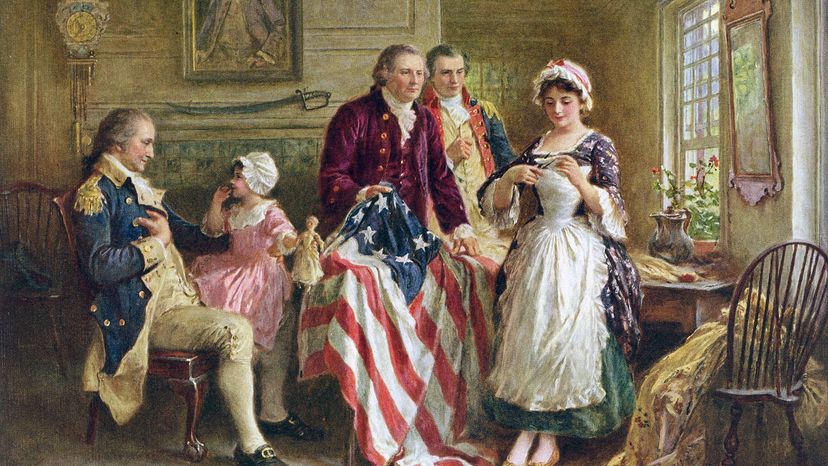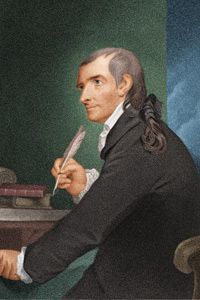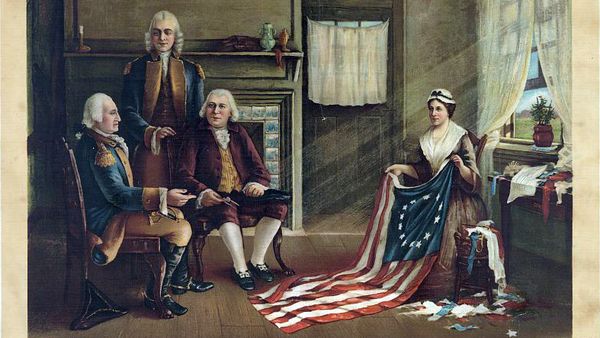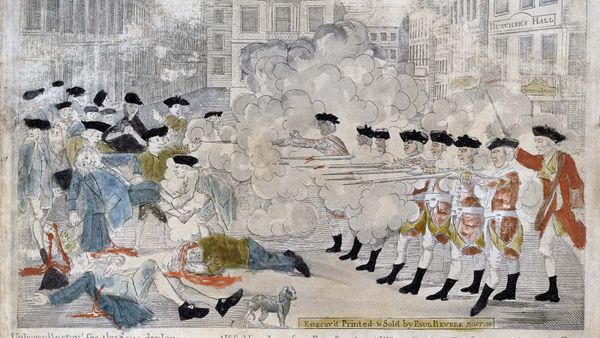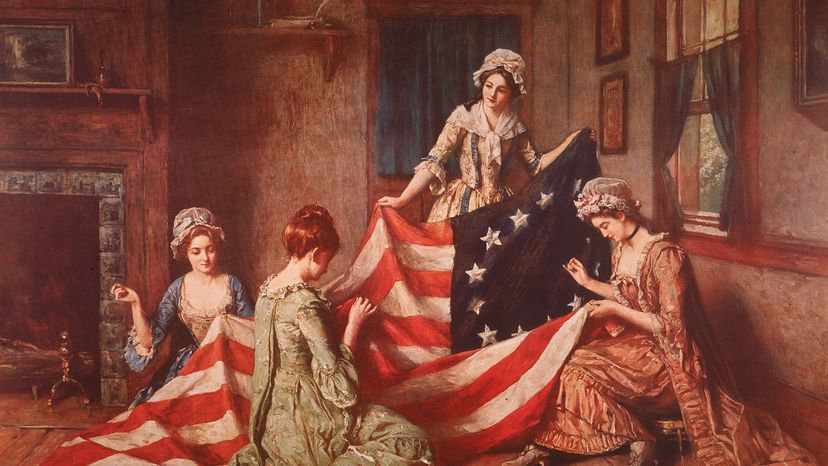
If you grew up in the United States, chances are you've heard the story of Betsy Ross and the first American flag. It's a charming tale that's won its place in many hearts and imaginations, just like other stories about the nation's founding. However, much as we might want to believe it, some historians have come to question the historical accuracy of the Betsy Ross flag story. Before we discuss the controversy, let's go over the famous yarn for those who haven't heard it or who are a little fuzzy on their grade-school history.
Legend has it that one day in 1776, George Washington, Robert Morris and George Ross (a relative of Betsy's) called on Mrs. Ross, an upholsterer and seamstress. The men identified themselves as a congressional committee and asked for her help sewing a flag. Washington reached into his coat pocket and took out a folded paper with a crude sketch of his vision for the flag. The design had 13 red and white stripes as well as 13 stars (each representing the 13 colonies and soon-to-be states). When asked if she could do it, Ross famously replied, "I do not know, but I will try" [source: Betsy Ross House]. Supposedly, Ross suggested one important alteration to Washington's design: Instead of six-pointed stars, she recommended five-pointed ones. The men agreed, and she set to work sewing the first American flag.
Advertisement
An easily recognizable flag was a practical necessity for the new nation -- especially in battle when communication was slow and difficult. At the outset of the conflict with Britain, the colonies had been using the Union Jack (the British flag) within the design of their own flag. This prompted confusion among British troops when colonists flew their flag outside Boston [source: Crews]. Beyond these practicalities, colonists fighting for independence were ready to distance themselves from their British oppressors. So did Betsy Ross, the humble seamstress from Philadelphia, have a hand in sewing and designing the all-important flag and symbol for the fledgling United States?
